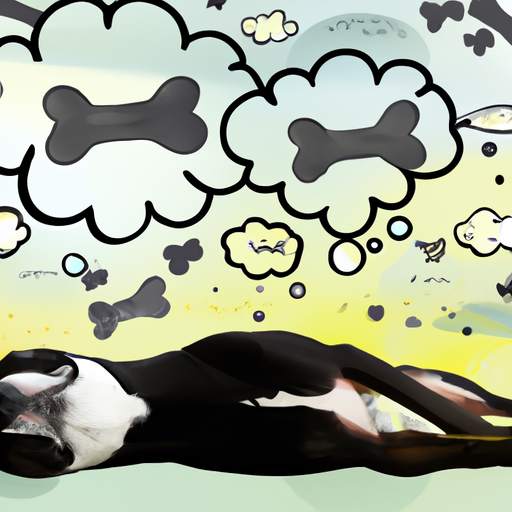Understanding Your Dog’s Sleep Cycle
As a caregiver, you are no stranger to the strange and sometimes amusing habits of your canine companion. One such peculiarity is the twitching you might observe when your dog is in a deep slumber. Why exactly do dogs twitch in their sleep? To answer this question, it’s essential to understand their sleep cycle.
Dogs, like humans, have two primary stages of sleep:
-
Non-Rapid Eye Movement (NREM): This is the initial phase of sleep, in which your dog’s brain activity slows down, and their body relaxes.
-
Rapid Eye Movement (REM): This is when dreams occur. Your dog’s brain activity increases, and this may result in physical movements like twitching.
A dog will typically enter the REM stage of sleep about 20 minutes after falling asleep. This stage can last from 2 minutes to an hour.
The Science Behind the Twitch
The twitching you notice is primarily a result of your dog’s dreaming during the REM stage. It’s their brain’s way of communicating with their body. In fact, these movements can range from subtle leg twitches to full-blown running motions.
| Sleep Stage | Brain Activity | Physical Activity |
|---|---|---|
| NREM | Lower | Minimal |
| REM | Higher | Increased (twitching, running motions) |
Dreaming Dogs: A Fascinating Phenomenon
Dogs’ dreams are likely not vastly different from ours. They might dream about their daily activities like chasing a ball, digging a hole, or merely running around the yard. These dreams can trigger the twitching movements you observe. As a caregiver, watching your dog dream can be an endearing and entertaining experience.
When to Worry About Your Dog’s Twitching
While dog twitching in sleep is generally harmless, there are situations when it might indicate a health problem. If the twitching is accompanied by whimpering, crying, or appears to be causing distress, it could be a sign of a health issue like a neurological disorder. Always consult with a vet if you’re concerned about your dog’s health.
Helping Your Twitching Dog
If your dog’s twitching seems to be causing them discomfort, there are a few things you can do to help:
- Ensure they have a comfortable sleeping area.
- Avoid waking them abruptly, which might disorient them.
- Consult a vet for further advice if the twitching seems excessive or problematic.
FAQs
Q: Is it normal for dogs to twitch in their sleep?
A: Yes, it’s quite normal and often a sign of dreaming.
Q: When should I be concerned about my dog’s twitching?
A: If twitching is frequent, intense, or accompanied by signs of distress or discomfort, consult a vet.
Q: Can I do anything to stop my dog from twitching?
A: Generally, no. But if the twitching is problematic, consult a vet for advice.
Q: What are dogs dreaming about when they twitch?
A: While we can’t know for sure, it’s believed dogs dream about their daily activities.
Q: How long does the REM stage last in dogs?
A: It varies but can last from 2 minutes to an hour.



